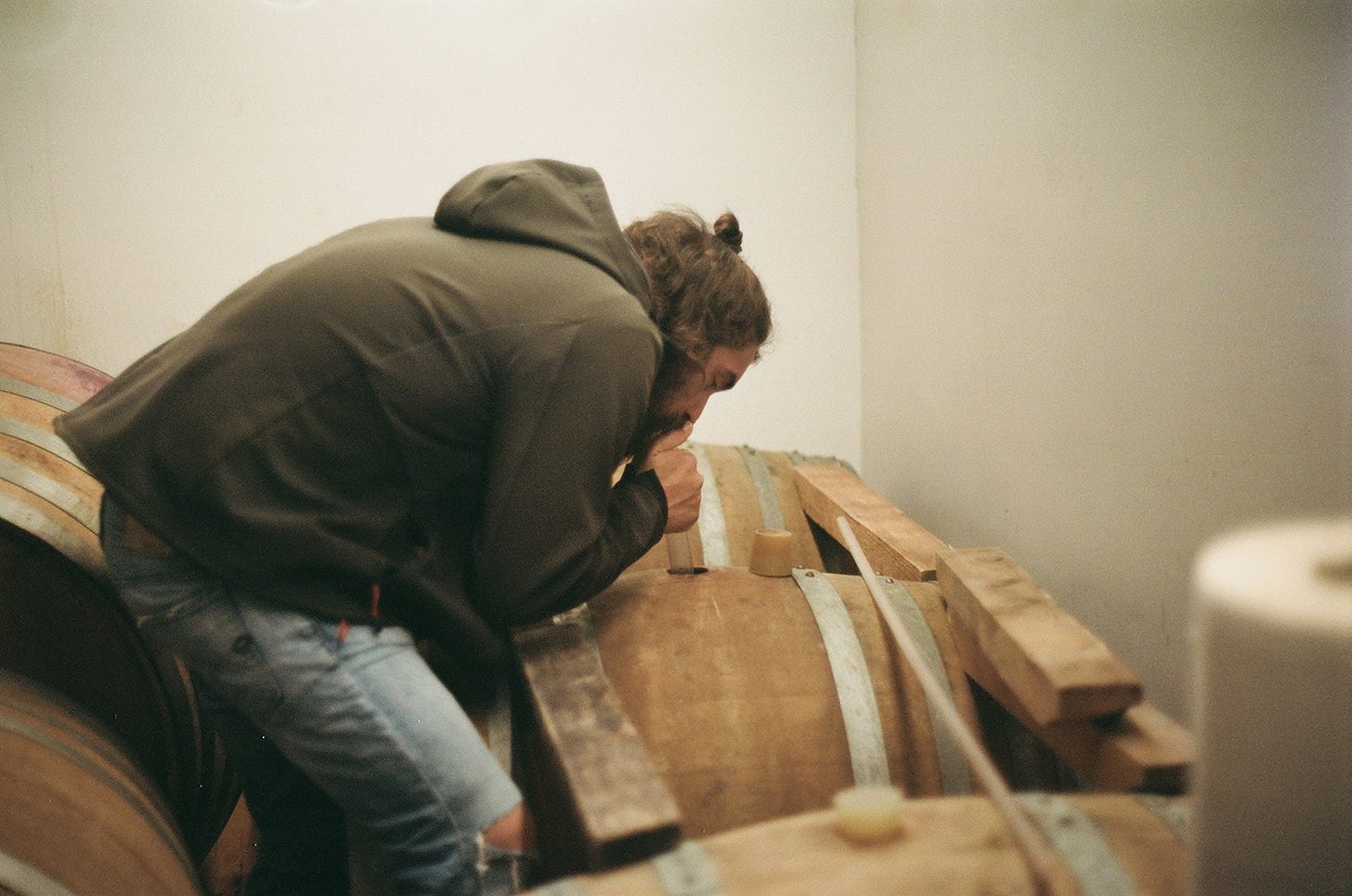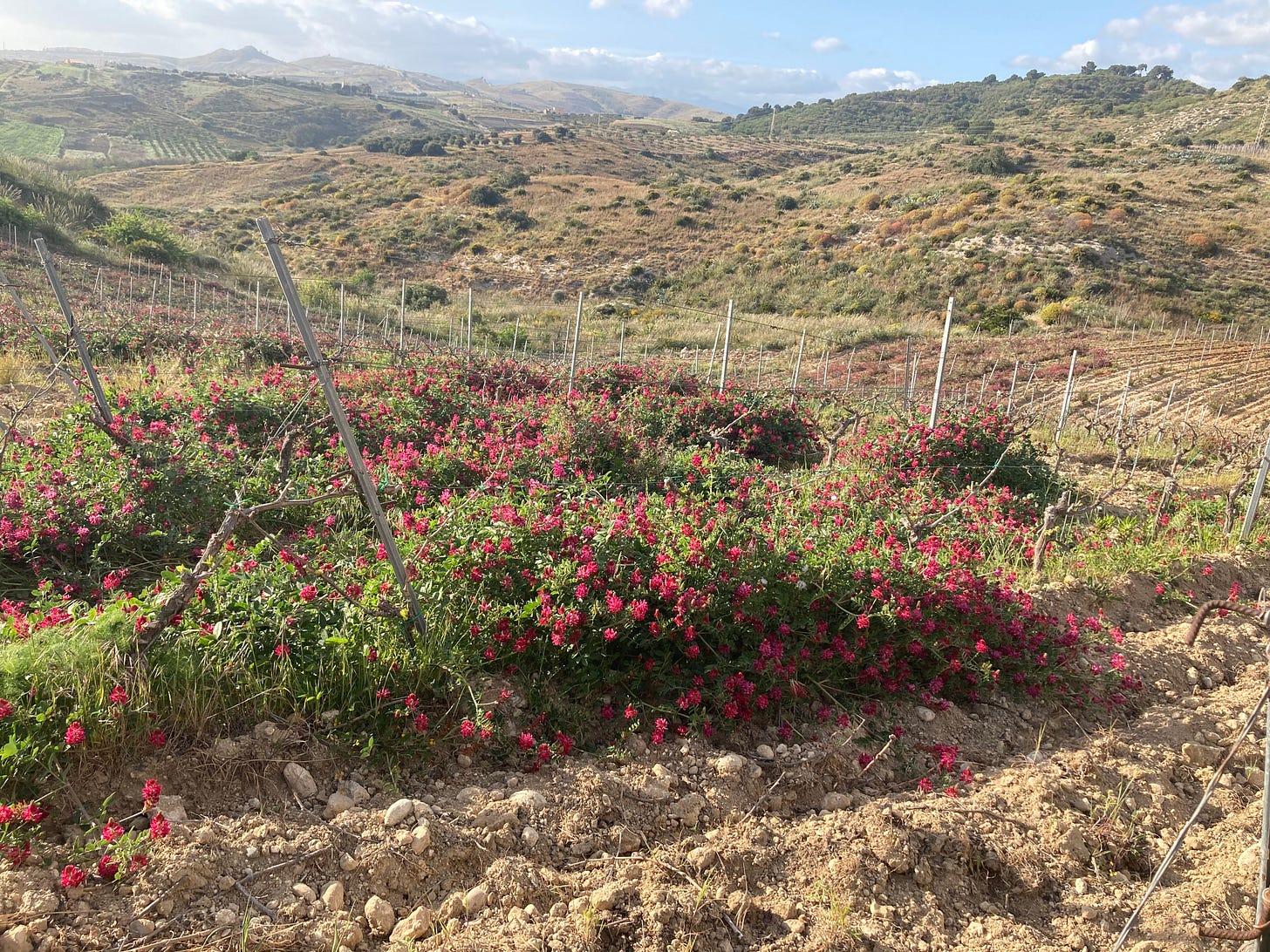April 7, 2022
The first time I met Calogero Caruana was outside Il Buongustaio dell’Etna, a tiny enoteca that, on that particular evening, felt like the center of the Sicilian wine universe. I had just wrapped up a day at Contrade dell’Etna, and by nightfall it seemed the entire festival had migrated there. Inside, the shelves were stacked floor to ceiling with every Etna wine imaginable, and a few bottles of Champagne for good measure. People packed themselves in shoulder to shoulder, spilling out onto the street with glasses of Nerello Mascalese Rosato in hand, nibbling on pistachio-studded salumi.
I hadn’t planned to see Calogero that day; I was scheduled to visit him later in the week. But there he was, on the other side of Sicily, as surprised to see me as I was him. Big island, small world. We shared a glass and promised to reconnect soon.
A few days later, I arrived at Calogero’s childhood home in the small coastal town of Montallegro. Driving east from Marsala, the flat, windy landscape dotted with palm trees and Moorish architecture slowly gave way to the low rocky hills of Agrigento. To my right, the southern Mediterranean shimmered emerald-blue, and it wasn’t hard to imagine the port of Tunis just beyond the horizon.
Calogero had recently returned here after years working alongside Syrah maestro Stefano Amerighi in Cortona, Tuscany. Now, he was cultivating his own small vineyard tucked into a shallow valley behind a sand dune that separated the vines from the sea.
His cellar was as humble as it gets: his parents’ converted garage, six barrels lined up on one wall, a few stainless steel tanks on the other. But what was inside those vessels carried the essence of this rugged terroir. We tasted tank samples. Precocious adolescent iterations of wines that wouldn’t necessarily settle with age, as much as they would refine their intensity.
At lunch with his parents we snacked on Caponata and oily black olives. Calogero opened a bottle of his Catarratto, its taut citrus and salty, ripe fruit simultaneously awoke andrelaxed the senses. His Vino Bianco, 100% Inzolia, exemplified the terroir of this place: half oxidized, half macerated. The wine yielded tannins, briny green olive notes, almond-like nuttiness, and a burst of fresh citrus. It was a vivid reflection of the region’s signature agricultural products, Castelvetrano olives, almonds, and citrus fruit.
We moved on to roasted sardine skewers laced with breadcrumbs and wild coastal herbs, followed by his Vino Rosso, a co-ferment of 90% Nero d’Avola and 10% Inzolia. Juicy plums and tart blackberries mingled with the savory depth of black olives, calling to mind Sicily’s answer to the Northern Rhône. Calogero’s mother brought out a whole roasted sea bass, which he finished with glugs of his own olive oil and a scatter of coarse sea salt before we dug in.
I was ready to surrender to a blissful afternoon nap, but Calogero had other plans.
We climbed into his battle-worn yellow Fiat Panda and barreled up dusty, narrow roads to his vineyards in the Torre Salsa Nature Reserve. Behind pristine sand beaches and windswept dunes, his vines clung stubbornly to the sandy soil, bordered by wild almond trees and a small olive orchard.
There’s a warmth in Calogero’s eyes that makes you feel instantly at home, and a deep pride in sharing the singular beauty of this corner of Sicily. Whether sipping wine with friends on Etna or consulting with winemakers in Tuscany, he carries Agrigento with him everywhere, and through every bottle he makes.







